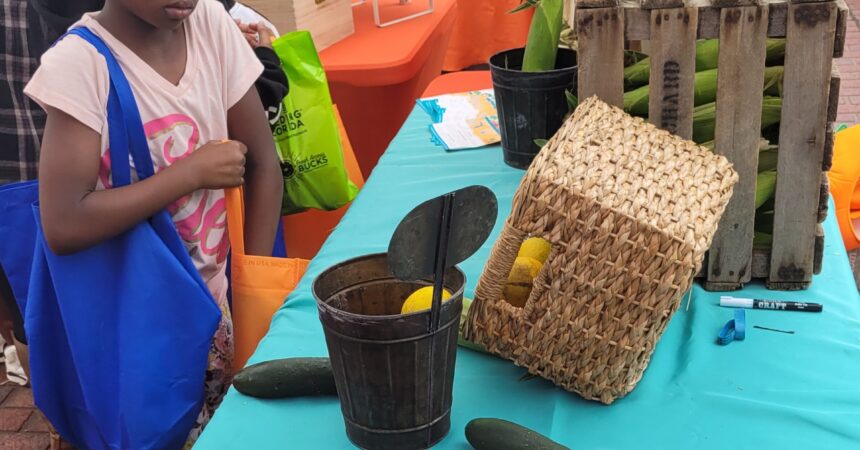
Debt ceiling deal puts squeeze on SNAP beneficiaries

Photo by St. Clair Murraine

Monique Ellsworth 
Sky Beard
By St. Clair Murraine
Outlook Staff Writer
Not everyone was celebrating when Pres. Joe Biden signed a bill that called for a two-year spending cap as part of a national debt ceiling settlement.
Cuts to IRS spending quietly got into the deal that Biden and House Speaker Kevin McCarthy (R-Calif.) agreed to earlier this month. Bigger concern are cuts that could leave marginalized families facing a challenge just keeping food on the table.
Anti-hunger advocates in the Big Bend are among those left to help affected families find answers. Among the concessions that Republican legislators wanted most is an increase in the age of recipients in the Supplemental Nutrition Assistance Program, better known as food stamps. That age provisions calls for able-bodied adults who are 18-54 years-old without dependents to show proof of employment.
Previously the age was 18-49. Additionally, SNAP applicants will have to prove they’re enrolled in a job training program.
Major exemptions in the new rule allow veterans, homeless individuals, and anyone 18 to 24 who has aged out of foster care to receive SNAP benefits. Many of the changes kick in between this October and next fall.
The changes are worrisome to many non-profits that are fighting against food deserts and hunger. The age requirement could be detrimental, said Sky Beard, Florida Director for No Kid Hungry.
“Our concern is that it doesn’t lead to employment for those folks but it potentially leads to food insecurity because those folks would not be able to participate,” Beard said, adding that the change could affect more than one million people nationwide.
“In Florida, potentially about 44,000 or so could be impacted,” she said. “Those are pretty general estimates at this point, but regardless it’s a lot of folks.”
The change comes at a time right after 41 million recipients lost extra SNAP benefits that were in place during the pandemic. Beard said she expects rural communities to feel the pinch more than most.
“The rural communities are facing hunger in ways that many other communities don’t,” she said. “It just becomes very difficult to navigate some resources and transportation. Rural communities have a lot of strengths but there is also a lot of challenges when it comes to access to food.”
According to the Center on Budget and Policy Priorities, the change should lead to 750,000 people who are expected to be affected by the work requirements, with an estimated 225,000 likely to lose their benefits.
Ellen Vollinger, SNAP director for the Food Research and Action Center, expressed concern about SNAP being a part of the debt ceiling deal during an interview with TIME.
“There was a lot at stake for the country but the provisions that were included with regard to SNAP really did not have to be added to the debt ceiling,” Vollinger told the outlet. “The amount of money that gets taken away from people on SNAP as a result of this debt deal has enormous consequences for them on an individual level.”
While Second Harvest of the Big Bend doesn’t assist with signing up for SNAP benefits, the non-profit food bank provides for families already marginalized. The agency already serves 16 counties daily but Monique Ellsworth, CEO of Second Harvest of the Big Bend, is anticipating more people will be in need with the SNAP change.
Summertime usually means that schoolchildren don’t get free or reduced-cost meals. That means hunger becomes a total family issue, Ellsworth said.
“There are lots of state and federal programs focused on child nutrition but when we are only focusing on a child we are losing focus on the entire family unit who is struggling,” she said. “What we are trying to figure out is how we ensure that the entire family is the focus of as many of our programs as possible.”
Anti-hunger advocates anticipate that the number of people affected by reduction of SNAP benefits will push more families to look elsewhere for assistance.
“I think it’s unfortunate,” Ellsworth said, “but all we can do is look to the future on different ways we can help to make up the difference, as the local non-profit to start bringing resources that have now been lost to families that we know are struggling.”







